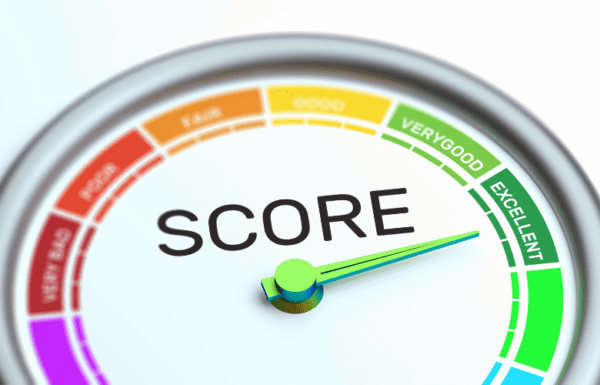If you have bad credit, getting approved for a personal loan can seem like an uphill battle. However, having a low credit score doesn’t mean you’re out of options. Many lenders today understand that credit scores don’t always reflect a person’s full financial picture. With the right strategy, preparation, and a bit of patience, you can still qualify for a personal loan—even with less-than-perfect credit.
In this comprehensive guide, we’ll walk you through how to get a personal loan with bad credit, what to expect, and how to avoid costly mistakes along the way.
What Is Considered Bad Credit?
Credit scores typically range from 300 to 850. According to FICO scoring models:
- 300–579: Poor
- 580–669: Fair
- 670–739: Good
- 740–799: Very Good
- 800–850: Excellent
If your score falls below 580, most traditional lenders will classify you as a high-risk borrower. This often means higher interest rates, stricter terms, or outright denial of loan applications. But don’t lose hope—there are still viable options.
Step 1: Know Your Credit Score and Report
Before applying, check your credit score and full credit report from all three major bureaus—Equifax, Experian, and TransUnion.
Why It Matters:
- You’ll know where you stand.
- You can identify and fix any errors or inaccuracies that may be lowering your score.
- Knowing your score helps you target the right lenders.
Tip: You’re entitled to one free credit report per year from each bureau via AnnualCreditReport.com.
Step 2: Consider Lenders That Work with Bad Credit Borrowers
Not all lenders cater to bad credit applicants. You need to focus your search on lenders who specialize in subprime loans.
Types of Lenders to Consider:
- Online lenders: Many fintech companies offer personal loans for low-credit borrowers.
- Credit unions: Often more flexible and community-focused.
- Peer-to-peer lenders: Connect you with individual investors willing to fund loans.
- Banks: Some offer loans with more lenient criteria if you have an existing relationship.
Important: Look for reputable, licensed lenders—avoid payday loans or unregulated loan sharks.
Step 3: Prequalify Without Hurting Your Credit
Many lenders offer soft credit checks that allow you to prequalify for a loan without affecting your score.
Benefits of Prequalification:
- See estimated rates, loan amounts, and terms.
- Avoid unnecessary hard inquiries that lower your score.
- Compare multiple offers before applying.
Tip: Use comparison tools to gather offers from multiple lenders and evaluate the Annual Percentage Rate (APR), fees, and repayment terms.
Step 4: Improve Your Approval Odds
Even with bad credit, there are strategic ways to strengthen your application and improve your chances.
How to Boost Your Application:
- Apply with a co-signer: Someone with good credit can help secure better terms.
- Offer collateral: A secured personal loan (backed by savings, a car, etc.) lowers risk for the lender.
- Provide proof of stable income: Pay stubs, tax returns, or employer letters.
- Lower your debt-to-income ratio (DTI): Pay down existing debts if possible.
- Limit your loan amount: Borrow only what you truly need.
Bonus Tip: Wait until your next payday or after a positive financial event (like a promotion) before applying.
Step 5: Understand the Loan Terms
Before signing, carefully review all terms and conditions.
Key Things to Check:
- APR: Interest plus all fees combined.
- Repayment schedule: Fixed monthly payments or flexible terms?
- Origination fee: One-time fee deducted from the loan amount.
- Late payment or prepayment penalties
- Total repayment cost
Avoid loans with APRs above 36% or those with vague repayment terms. These could be predatory loans that trap you in cycles of debt.
Step 6: Avoid Common Traps and Scams
Bad credit borrowers are often targets for predatory lenders who charge exorbitant fees and high interest rates.
Warning Signs of a Scam:
- Lender guarantees approval without checking your credit or income.
- No physical address or contact information.
- Requests upfront fees before funding the loan.
- Pressures you to act immediately.
Always research the lender, read online reviews, and verify they’re licensed in your state.
Step 7: Use the Loan Responsibly
Once approved, make the most of your opportunity to rebuild your credit and strengthen your finances.
How to Make It Work for You:
- Stick to your budget and avoid unnecessary purchases.
- Make all payments on time to build your credit history.
- Set up automatic payments or reminders to avoid late fees.
- Use the loan for its intended purpose—not for discretionary spending.
Responsible use of a personal loan can not only help you solve current financial challenges but also set the stage for future loan approvals with better rates and terms.
Alternatives to Personal Loans with Bad Credit
If you don’t qualify for a personal loan, consider these alternatives:
- Credit-builder loans: Designed specifically to help you improve your credit.
- Borrowing from family or friends: Be sure to put terms in writing.
- Local credit union small-dollar loans: Typically lower interest and more flexible.
- Debt management programs: Work with non-profit credit counselors to reduce or manage debt.
- Employer or community-based assistance programs
Conclusion
Getting a personal loan with bad credit is absolutely possible—but it requires preparation, knowledge, and caution. By checking your credit, choosing the right lender, prequalifying, and strengthening your application, you can secure the funding you need without falling into a financial trap.
Above all, treat your personal loan as an opportunity to rebuild your financial future, not just a quick fix. Use it wisely, repay it on time, and it can be a powerful step toward better credit and greater financial freedom.
